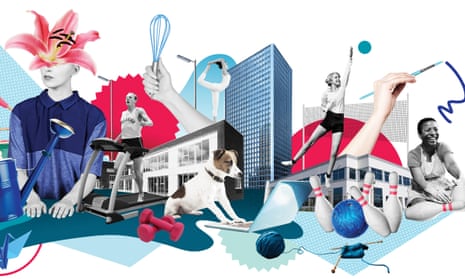When it comes to keeping employees happy and productive, companies such as Google lead the way. The brand is as famous for its staff perks – pool tables and bowling alleys, free food and gym memberships – as it is for its technology, and even employs a chief happiness officer whose sole job is to keep employees happy and maintain productivity.
Now other companies are catching on fast, boosting engagement and motivation by involving employees in creative activities and offering incentives that help them enjoy their jobs and feel good about themselves.
Workplaces all over the UK are creating breakout zones and gaming areas, where staff can chill out, chat, and stimulate their creative juices, or offering classes that equip staff with creative skills, such as languages, painting and drawing, and learning musical instruments.
Why? Because organisations that foster a workplace culture of creativity are likely to have happy, motivated employees who are more loyal and more productive.
Mark Rhodes, director of marketing at recruitment firm Reed, says: “All employers stand to gain by promoting creativity at work. The most successful businesses are those that engender creative thinking and develop environments where everyone generates ideas, has a voice, asks questions and challenges the norm. Some ideas will stick, some won’t, but what’s certain is you’ll learn a lot from the process along the way.”
Some employers are actively encouraging creative collaborations between teams. Every year, Manchester Metropolitan University (MMU) runs an event called Engage Week, where staff host events for other members of staff who want to learn something new. These range from sporting events to craft activities, such as metalwork, sausage making, chocolate making, picture framing, and learning basic sign language.
“More than 100 events take place during Engage Week,” says MMU organisation development and training officer Alison Laithwaite. “We also have an MMU Makers group, comprising members of staff who do a wide range of crafts in their spare time, selling some of them during Engage Week and at Christmas, and also hosting some of the Engage Week sessions.”
Cognizant Business Consulting sees value in tapping into and learning about the creative talents of youngsters. The company holds regular Insight Days, and invites local school pupils to come in and learn about what a career in Stem (science, technology, engineering and maths) looks like.
They spend the morning taking part in interactive games around technology innovation, before facing four of Cognizant’s senior members of staff in a Dragons’ Den-style challenge involving different hi-tech products, such as wearable technology.
“If you set a group of year 9 pupils a challenge, it is striking how creative they can be,” says vice-president Phil Dunmore. “In a brainstorm, it always impresses me how they are able to immediately think laterally and intuitively, pulling in reference points from their friends, family, their environment and their use of modern technologies like social media.
“Creativity, lateral thinking and the ability to communicate are crucial skills in progressing through the ranks in any organisation. It is easy to lose some of that natural creativity in our adult lives. Spending the day with secondary school students reminds us of this – it benefits us as much as it does them.”
Employees can be entrepreneurially creative within the confines of their full-time role, injecting fresh ideas into the company, some of which are implemented and rewarded.
Virgin is famous for its culture of innovation and creativity, and some of the ideas that have been implemented at Virgin Management were originated by members of staff.
“When we moved to a new building we asked people for their ideas on what was hot, and what was not,” says head of people operations Sharon Pommells. “The feedback ranged from ideas around the aesthetics, and what they wanted their workspace to look like, to the practical – someone suggested having hand driers installed because they are cool and environmentally friendly.”
Ideas on a much larger scale, such as unlimited holidays, were also the product of employee innovation. The key to making employee innovation work lies with a management team that listens to all the ideas and commits to making the best ones work.
At Virgin Management, employee ideas are submitted via a forum, and only a small number, usually no more than three, are taken on and implemented every year.
“If you are open to the gathering of thoughts, people will respond,” says Pommells. “When people feel more involved, they are happier, more engaged and more productive.”
Boost creativity
- Employees in companies that support healthy habits are eight times more dedicated, and three-and-a-half times more creative and innovative.
- Leaving the office and interacting with your colleagues boosts creativity and engagement.
- Six out of 10 employees said they would come up with more creative suggestions if they were rewarded for them.
Sources: World Economic Forum, The Energy Project and Harvard Business Review, HR Magazine
Looking for a job? Browse Guardian Jobs or sign up to Guardian Careers for the latest job vacancies and career advice

Comments (…)
Sign in or create your Guardian account to join the discussion